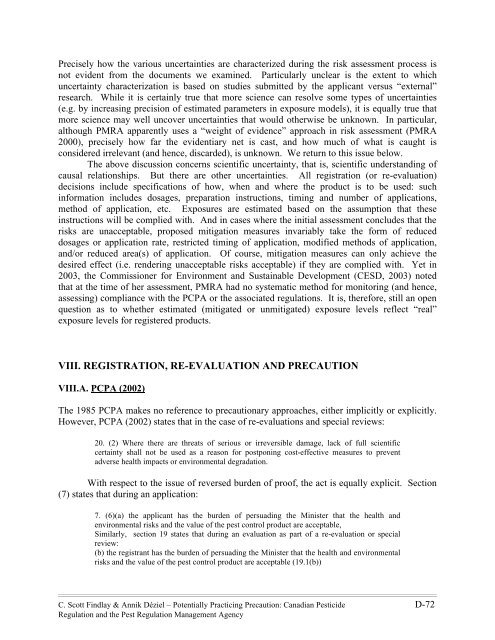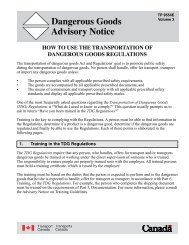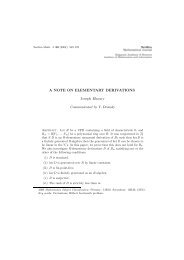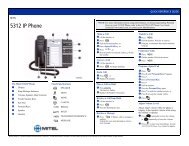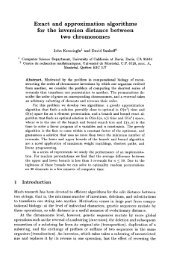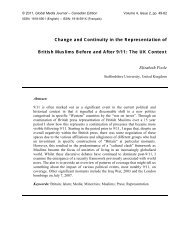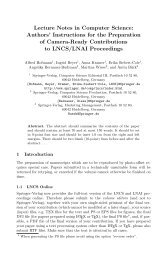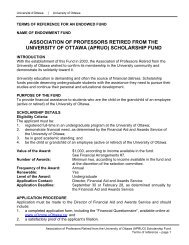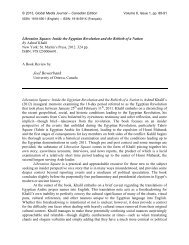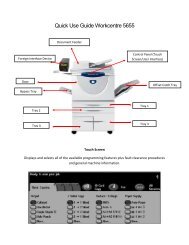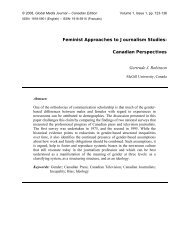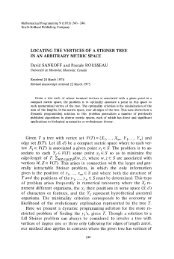PRACTICING PRECAUTION and ADAPTIVE MANAGEMENT ...
PRACTICING PRECAUTION and ADAPTIVE MANAGEMENT ...
PRACTICING PRECAUTION and ADAPTIVE MANAGEMENT ...
- No tags were found...
You also want an ePaper? Increase the reach of your titles
YUMPU automatically turns print PDFs into web optimized ePapers that Google loves.
Precisely how the various uncertainties are characterized during the risk assessment process isnot evident from the documents we examined. Particularly unclear is the extent to whichuncertainty characterization is based on studies submitted by the applicant versus “external”research. While it is certainly true that more science can resolve some types of uncertainties(e.g. by increasing precision of estimated parameters in exposure models), it is equally true thatmore science may well uncover uncertainties that would otherwise be unknown. In particular,although PMRA apparently uses a “weight of evidence” approach in risk assessment (PMRA2000), precisely how far the evidentiary net is cast, <strong>and</strong> how much of what is caught isconsidered irrelevant (<strong>and</strong> hence, discarded), is unknown. We return to this issue below.The above discussion concerns scientific uncertainty, that is, scientific underst<strong>and</strong>ing ofcausal relationships. But there are other uncertainties. All registration (or re-evaluation)decisions include specifications of how, when <strong>and</strong> where the product is to be used: suchinformation includes dosages, preparation instructions, timing <strong>and</strong> number of applications,method of application, etc. Exposures are estimated based on the assumption that theseinstructions will be complied with. And in cases where the initial assessment concludes that therisks are unacceptable, proposed mitigation measures invariably take the form of reduceddosages or application rate, restricted timing of application, modified methods of application,<strong>and</strong>/or reduced area(s) of application. Of course, mitigation measures can only achieve thedesired effect (i.e. rendering unacceptable risks acceptable) if they are complied with. Yet in2003, the Commissioner for Environment <strong>and</strong> Sustainable Development (CESD, 2003) notedthat at the time of her assessment, PMRA had no systematic method for monitoring (<strong>and</strong> hence,assessing) compliance with the PCPA or the associated regulations. It is, therefore, still an openquestion as to whether estimated (mitigated or unmitigated) exposure levels reflect “real”exposure levels for registered products.VIII. REGISTRATION, RE-EVALUATION AND <strong>PRECAUTION</strong>VIII.A. PCPA (2002)The 1985 PCPA makes no reference to precautionary approaches, either implicitly or explicitly.However, PCPA (2002) states that in the case of re-evaluations <strong>and</strong> special reviews:20. (2) Where there are threats of serious or irreversible damage, lack of full scientificcertainty shall not be used as a reason for postponing cost-effective measures to preventadverse health impacts or environmental degradation.With respect to the issue of reversed burden of proof, the act is equally explicit. Section(7) states that during an application:7. (6)(a) the applicant has the burden of persuading the Minister that the health <strong>and</strong>environmental risks <strong>and</strong> the value of the pest control product are acceptable,Similarly, section 19 states that during an evaluation as part of a re-evaluation or specialreview:(b) the registrant has the burden of persuading the Minister that the health <strong>and</strong> environmentalrisks <strong>and</strong> the value of the pest control product are acceptable (19.1(b))C. Scott Findlay & Annik Déziel – Potentially Practicing Precaution: Canadian Pesticide D-72Regulation <strong>and</strong> the Pest Regulation Management Agency


